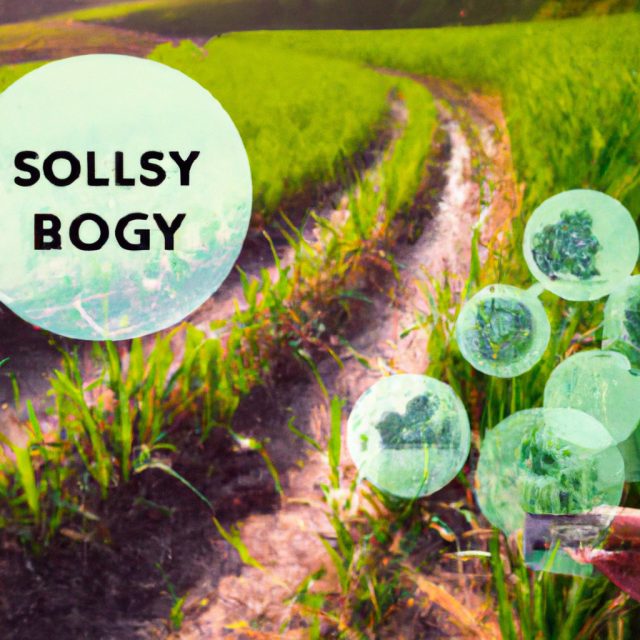Redefining the Journey in an Age of Awareness
Travel is a transformative experience. It broadens our horizons, challenges our perspectives, and fills our lives with unforgettable memories. We collect passport stamps like badges of honor and stories that last a lifetime. But in our interconnected world, a question is emerging with increasing urgency: What is the true cost of our adventures? As we traverse the globe, we leave behind a footprint — environmental, cultural, and economic. The traditional model of tourism, often focused on high volume and low cost, has shown its cracks, leading to over-tourism, environmental degradation, and the erosion of local cultures. It’s time to look beyond the glossy brochures and consider a more profound, more responsible way to explore our planet.
Enter sustainable travel. This isn’t about sacrificing comfort or adventure; it’s about enhancing them. It’s a mindset shift towards making conscious choices that protect the environment, respect local communities, and support local economies. It’s about creating a positive exchange, where both the traveler and the destination benefit. This guide is your comprehensive roadmap to understanding and embracing sustainable travel. We’ll delve into its core principles, provide actionable steps for planning and executing your trip, and explore how you can make a lasting, positive impact, ensuring that the beautiful places we love to visit remain vibrant and healthy for generations of travelers and locals to come.
The Three Pillars of Sustainable Travel: A Holistic Approach
Sustainable travel isn’t just about reusable water bottles and carbon offsets, though those are important pieces of the puzzle. True sustainability rests on three interconnected pillars. Understanding them is key to making informed and impactful decisions before, during, and after your trip.
1. Environmental Responsibility: Minimize Your Footprint
This is often the most visible aspect of sustainable travel. It involves actively working to reduce the negative impact your journey has on the planet’s ecosystems. From the carbon emissions of your flight to the plastic waste you generate, every choice matters. The goal is to preserve the natural beauty and biodiversity of the places you visit.
- Choose Greener Transportation: Air travel is a significant contributor to carbon emissions. When possible, opt for trains, buses, or even shared rides, especially for shorter distances. If you must fly, choose direct flights (takeoffs and landings use the most fuel) and consider airlines with modern, more fuel-efficient fleets. Many travelers also choose to offset their carbon footprint through certified programs that invest in renewable energy or reforestation projects.
- Pack Light and Smart: The heavier the plane, the more fuel it burns. Packing light is an easy way to reduce your share of emissions. More importantly, pack with intention. Bring a reusable water bottle and coffee cup, a cloth tote bag for shopping, solid toiletries (shampoo bars, toothpaste tablets) to reduce plastic packaging, and a portable water filter or purifier to avoid buying bottled water.
- Conserve Resources: Treat your hotel room or guesthouse like your own home. Turn off lights and air conditioning when you leave, take shorter showers, and reuse towels and linens for multiple days. These small actions, when multiplied by millions of tourists, have a massive collective impact on water and energy consumption.
- Leave No Trace: This is a core principle for any outdoor activity. Pack out everything you pack in, stay on designated trails to protect fragile ecosystems, and never disturb wildlife for a photo.
2. Social & Cultural Responsibility: Connect Authentically
Sustainable travel is fundamentally about people. It means showing deep respect for the local culture, traditions, and heritage of the communities you visit. It’s about moving from a transactional tourist to a respectful guest, fostering positive and meaningful interactions that enrich both you and your hosts.
- Do Your Homework: Before you go, take some time to learn about the local customs, social norms, and a few basic phrases in the local language. Understanding appropriate dress codes (especially for religious sites), greetings, and etiquette shows respect and can open doors to more genuine interactions.
- Ask for Permission: This is especially crucial when it comes to photography. Always ask for consent before taking a photo of someone, particularly children. A person’s image is their own, not a souvenir for your collection. A smile and a gesture are often all it takes to get a positive response.
- Engage with Humility and Curiosity: Approach your interactions with an open mind. Ask questions, listen to stories, and be willing to learn. Avoid making assumptions or judgments based on your own cultural background. This is where real connection happens.
- Support Cultural Heritage: Attend local festivals, visit community-run museums, and purchase authentic, locally made crafts directly from the artisans. This helps preserve cultural traditions and provides a direct economic benefit to the community.
3. Economic Responsibility: Empower the Local Economy
Where does your money go when you travel? In many all-inclusive, foreign-owned resorts, a huge percentage of tourism revenue “leaks” out of the local economy. Economic sustainability aims to reverse this trend by ensuring that the money you spend stays within the community and directly benefits the people who live there.
- Stay Local: Choose locally owned accommodations over large international chains. This could be a family-run guesthouse, a boutique hotel, or a community-managed eco-lodge. Your money goes directly to local families and business owners.
- Eat and Drink Local: Dine at independent restaurants that serve local cuisine and source their ingredients from nearby farms. Visit local markets for snacks and produce. This not only gives you a more authentic taste of the destination but also supports local farmers and restaurateurs.
- Hire Local Guides: For tours and excursions, hire a certified local guide. They offer unparalleled insight into their culture, history, and environment, and your fee directly supports their livelihood. Avoid unregulated tour operators who may not follow ethical or safety standards.
- Bargain Fairly: While haggling may be part of the culture in some markets, do so with respect. Remember that a small amount of money that means little to you could be a significant sum for the vendor. Pay a fair price for goods and services.
Planning Your Sustainable Trip: A Step-by-Step Guide

A successful, sustainable journey begins long before you leave home. Thoughtful planning is the foundation for a trip that is both incredible for you and beneficial for your destination.
1. Choosing Your Destination with Intention
Not all destinations are created equal when it comes to sustainability. Some are actively combating over-tourism and investing in conservation, while others are still grappling with the negative impacts. Research destinations that align with your values. Look for countries or regions with strong environmental protections, national parks, and a commitment to community-based tourism. Consider off-season travel to popular spots to reduce strain on infrastructure and distribute tourism income throughout the year. Or, venture off the beaten path entirely to discover lesser-known gems where your visit can have a more significant positive economic impact.
2. Booking Eco-Conscious Accommodations & Tours
The internet is your best friend here. Look for accommodations that are transparent about their sustainability practices. Do they hire local staff? How do they manage waste and conserve water and energy? Do they source food locally? Many hotels and lodges seek certifications from organizations like Green Globe, EarthCheck, or Rainforest Alliance. For tours, seek out small, locally-owned companies. Read reviews to see if they prioritize animal welfare, respect cultural sites, and provide fair wages for their staff.
3. Packing with Purpose: The Sustainable Toolkit
Your suitcase is your toolkit for responsible travel. A few key items can dramatically reduce your waste and environmental impact:
- The Zero-Waste Trio: A reusable water bottle, a travel coffee mug, and a set of reusable cutlery/straw. These three items can eliminate hundreds of single-use plastic items over the course of a trip.
- Reef-Safe Sunscreen: If you’re swimming in the ocean, regular sunscreens containing oxybenzone and octinoxate are incredibly harmful to coral reefs. Choose a mineral-based, non-nano zinc oxide sunscreen to protect both your skin and marine life.
- Solid Toiletries: Shampoo, conditioner, and soap bars eliminate plastic bottles, are lighter to carry, and won’t spill in your luggage.
- A Versatile Sarong or Scarf: Incredibly useful for covering up to enter temples, using as a towel, or as a light blanket on a chilly bus.
- Portable Power Bank: Charge it up overnight and carry it with you to avoid leaving devices plugged in unnecessarily or using public charging stations that consume energy.
On the Ground: Making a Difference During Your Travels
Once you’ve arrived, your daily choices continue to shape the impact of your journey.
Wildlife Encounters: Observe, Don’t Disturb
Seeing animals in their natural habitat is a magical experience, but it must be done ethically. A truly ethical wildlife encounter prioritizes the animal’s welfare above all else. This means no touching, feeding, or riding wild animals. Be wary of sanctuaries that allow extensive human interaction, as this is often a red flag for poor welfare standards. Choose tours that keep a respectful distance, use knowledgeable guides who enforce rules, and contribute to local conservation efforts. Your ticket should support the protection of the animals, not their exploitation.
Giving Back: The Right Way to Volunteer
The desire to help is admirable, but the world of “voluntourism” can be problematic. Short-term, unskilled volunteering, especially in orphanages or schools, can do more harm than good by creating dependency and disrupting community structures. If you want to volunteer, do thorough research. Look for reputable organizations that require a longer time commitment and specific skills that the local community has actually requested. Often, the best way to “give back” is simply by being a responsible tourist: spending your money locally, respecting the culture, and being a good ambassador for your own country.
The Ripple Effect: Bringing Sustainable Practices Home
Perhaps the most profound impact of sustainable travel occurs after you’ve returned home. The lessons learned and perspectives gained don’t have to end when you unpack your suitcase. The awareness you cultivate about plastic consumption, resource conservation, and the importance of supporting local businesses can translate directly into your daily life. Maybe you’ll start shopping at your local farmers’ market, become more conscious of your energy use, or advocate for better environmental policies in your own community.
Furthermore, share your experiences. Talk to your friends and family about what you learned. Post about the amazing local guesthouse you stayed at or the community-based tour that changed your perspective. By sharing your story, you can inspire others to travel more mindfully, creating a ripple effect that extends far beyond your own journey.
Your Journey to a Better World
Sustainable travel is not about perfection; it’s about progress. It’s a continuous journey of learning, adapting, and making more conscious choices. Every small step — every plastic bottle refused, every local artisan supported, every cultural tradition respected — contributes to a larger, positive movement. It transforms travel from a passive act of consumption into an active, engaged, and mutually beneficial experience. By embracing these principles, we do more than just see the world; we become a part of its preservation and its future. Your next adventure awaits. Make it one that counts.
Learn more: The Digital Nomad’s Blueprint: How to Thrive While Working and Traveling the World














